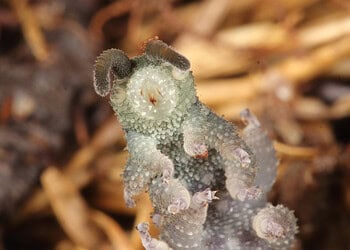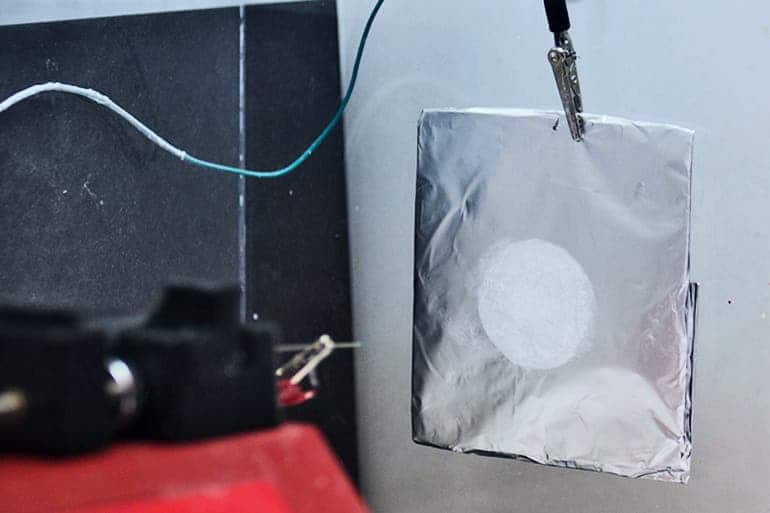
In Kenya’s arid Turkana Basin, a team of scientists has recovered something unexpected from the jaws of long-dead giants.
From the enamel of fossilized teeth belonging to prehistoric elephants, hippos, and rhinos that roamed the region 18 million years ago, researchers have extracted tiny fragments of protein, preserved against all odds. These are the oldest known protein remnants ever recovered, extending the record fivefold and opening a new frontier in our ability to peer into the deep evolutionary past.
Whispering Teeth
For decades, paleogenetics (the study of ancient DNA) has helped reconstruct family trees for extinct animals, including humans. But DNA is fragile. Even under the best conditions, it rarely survives beyond a million years. The oldest confirmed ancient DNA, found in Greenland’s frozen sediments, dates to just 2 million years ago.
Proteins, by contrast, are much more hardy. Composed of chains of amino acids, they can sometimes endure far longer than DNA, especially when entombed inside minerals like those in tooth enamel. Still, no one expected they would last this long, especially not in a place like the Turkana Basin—one of the hottest, least forgiving climates on Earth.

“The odds weren’t good,” Daniel Green, an evolutionary biologist at Harvard University and lead author of the new study, published in Nature, told New Scientist. “[Rift Valley] has been one of the persistently hottest places in the world for going back over 5 million years.”
But by carefully drilling powdered enamel from fossil teeth, Green and his colleagues gave ancient biochemistry a chance to speak. “It’s like being a dentist for a little bit,” he said.
The samples were shipped to Timothy Cleland, a physical scientist at the Smithsonian Museum Conservation Institute. Using a technique called mass spectrometry, Cleland was able to sort the molecular remnants by mass and identify their origin.
Among the tiny fragments, Cleland and his team found proteins like enamelin, ameloblastin, and DMP1—molecules that helped build the teeth of long-extinct rhinos and proboscideans (the group that includes elephants and their relatives).
“To be able to put even these older species into the tree of life with their modern relatives is a massive breakthrough,” Cleland noted enthusiastically.
A Fragile Archive, Locked in Rock
To understand how these proteins survived, scientists point to the unique properties of enamel.
“Enamel is mostly rock: a mineral called hydroxyapatite,” Green explained to Reuters. But it isn’t just a passive shell. Enamel forms through a process guided by proteins, which become locked inside its dense mineral structure. That burial helps shield them from moisture, bacteria, and heat—the main enemies of molecular preservation.
Importantly, enamel contains only a small amount of protein (about 1%), but that tiny fraction may be key. “Whatever protein is present ends up sticking around a lot longer,” said Green.
The team recovered protein fragments from teeth found at multiple sites across Turkana, ranging in age from 1.5 to 18 million years. They even detected ambiguous peptides in a 29-million-year-old fossil from Topernawi, though these fragments weren’t classified with high confidence.
Overall, the number of protein fragments decreased with age, a pattern expected in molecules slowly degrading over time. “We’re only scratching the surface right now,” Cleland said.
Still, the fact that proteins survived at all in the tropical heat is, in itself, remarkable. This opens up the possibility for scientists to find preserved proteins in regions they had written off before. “There might be some microenvironmental differences leading to protein preservation,” Cleland added.
Resurrecting Lost Family Trees
Because protein sequences are encoded by DNA, their structure can reveal how extinct species are related to modern ones. In this study, the team compared enamel proteins from the fossils with sequences from living mammals.
Their analysis showed that the 18-million-year-old rhino from Loperot was closely related to modern rhinos like Ceratotherium and Diceros. Similarly, a 16-million-year-old proboscidean from Buluk shared enamel sequences with today’s elephants. A hippo fossil from Lothagam aligned with living hippopotamuses—and, intriguingly, with whales, its close evolutionary cousins.
“This allows researchers to clarify evolutionary relationships across the tree of life, even for species that went extinct millions of years ago,” said Ryan Sinclair Paterson, a paleoproteomics researcher who led a similar study in Canada’s High Arctic. He was not involved in the Kenya research, but his own work recovered proteins from a rhino tooth fragment up to 24 million years old.
Taken together, the Arctic and African studies suggest that ancient proteins, long overshadowed by DNA, may offer a more durable archive for studying life’s history.

From Mammals to Dinosaurs?
The research adds a significant new tool to the growing field of paleoproteomics. Until now, most protein studies focused on relatively young fossils—often less than 4 million years old—and in cold or dry climates.
While the study recovered fewer protein fragments from older fossils, Green remains optimistic. “Newer and better methods for extracting and detecting ancient proteins could, perhaps, push paleoproteomics into the Mesozoic.”
In other words, the age of dinosaurs.
That’s still a speculative goal. But this research provides a crucial proof of concept: that meaningful molecular data can survive in tropical fossils far older than anyone had imagined.






